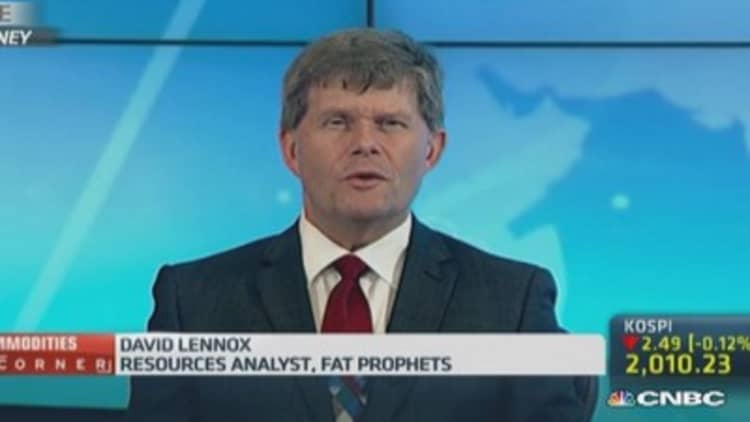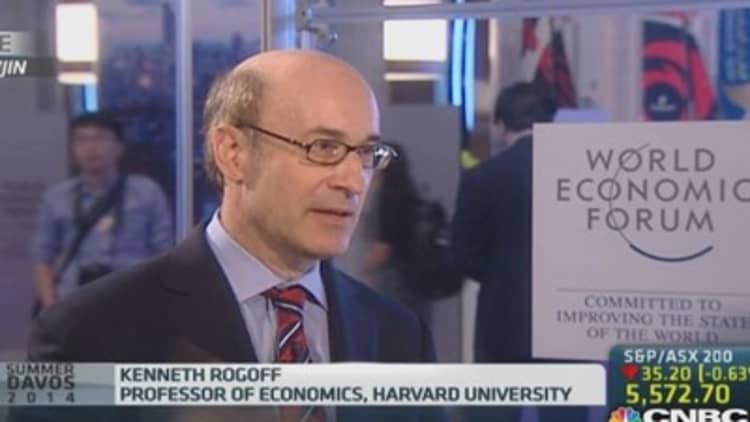Spot iron ore prices are at their lowest level since September 2009 amid a flood of excess inventory and waning demand from China, the world's largest iron ore consumer, and experts say small mine closures may be the only catalyst for higher prices.
"A large share of what is currently produced occurs at a marginal cost that is around the current spot price. If the price falls further, production is likely to be cut back, which would, in turn, limit supply on the market," sending prices higher, HSBC economists said in a report published Wednesday.
Read MoreWhy now's the time to buy iron ore
Rio Tinto CEO Sam Walsh echoed that view this week, saying the firm expects global iron ore capacity to fall by 125 million tons, or 10 percent, this year, Reuters reported.
Indeed, there have been several mine closures in China, home to majority of the world's lower-grade producers. As of June, 20 to 30 percent of domestic mines have been idle, according to the China Metallurgical Mining Enterprise Association.
"As the cost curve rises, it will take lower quality suppliers out of the market, leaving only prominent producers," Stan Shamu, market strategist at IG, told CNBC.

But how many closures needed for the market to balance out remains unclear: "In China, you might never know. It's a socialist market economy, the government decides,' said Jonathan Barratt, founder of Barratt's Bulletin.
Read MoreRio Tinto Q2 iron ore output rises
Not just China
Australian miners are also at risk of being pushed out of the market.
Most recently, junior iron ore producer Western Desert Resources decided to go into voluntary administration – an insolvency procedure where the directors of a financially troubled company appoint an external administrator – after failing to renegotiate funding from Macquarie for its Roper Bar project in the country's Northern Territory.
Australia doesn't have as many low-cost miners as China due to their higher breakeven levels and lower economies of scale, according to IG's Shamu. Breakeven levels are unsustainable for small miners due to high costs, making it hard to survive, he said.
Shares of second-tier Australian miners have been particularly hard hit; Mount Gibson and BC Iron are down 3 and 6 percent, respectively, for the week.
Read MoreCould a fight for Aussie iron ore assets be under way?

"Look at the balance sheet of Fortescue. They are starting to hurt if prices remain below $80. It's not just China, soon even Australian producers will start to have issues and they're highly leveraged," Barratt said.
Price rebound
Once more small mines close, prices are expected to recover.
"While sentiment remains fragile, the general consensus is that we will reach the $90 mark by year-end and see stability return," Shamu said.
Brazilian mining company Vale was equally optimistic; CEO and President Murilo Ferreira expects prices to reach $95-$100 before year-end, he told the Nikkei newspaper on Tuesday.
Read MoreAustralia's Fortescue says pays off more debt early
Meanwhile, HSBC expects prices to average $109 per ton over 2014 and rise to $105 by 2015.

